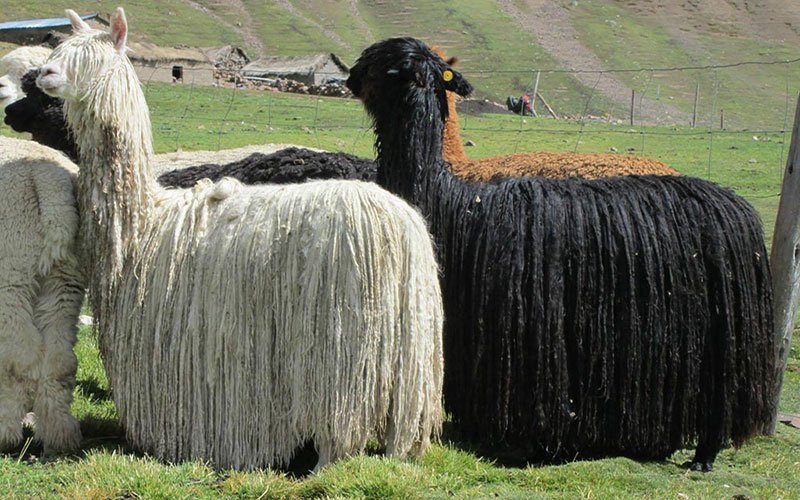Alpacas live and graze at altitudes between 3500m and 4500m in the Andes mountains. In this high altitude the temperature can vary from – 25℃ at night to over 35℃ degrees during the day, with strong winds, rain and snow.
That is also the reason that alpacas have the best insulating fur, which protects the alpaca under these circumstances due to the hollow fiber and to withstand these harsh weather conditions.

Alpaca
Alpaca breeds
There are two varieties of alpaca: Huacaya and Suri.
The Huacaya alpaca are almost 90% of present-day herds. They are strong and robust animals whose medium- length fleece has a fluffy appearance. They are resistant to cold and disease and do not mid tough pastures.
The Suri alpaca are slim and delicate, with long shaggy hair often reaching nearly to the ground. Their young are weak and at birth are affected by the low temperatures and by changes of climate and food.


The alpaca is usually sheared once a year; in general, this takes place in spring. The wool of the alpaca comes in 22 natural colors.
The Alpaca wool is classified according to the thickness of the wool. Baby royal and baby alpaca represent to the highest quality.
Royal Alpaca: under 20,0 micron
Baby Alpaca: 20,1 – 23,0 micron
Superfine: 23,1 – 26,9 micron
Medium: 27,0 – 30,9 micron
Strong: 31,0 – 35,9 micron
Coarse: 36,0 micron and more


